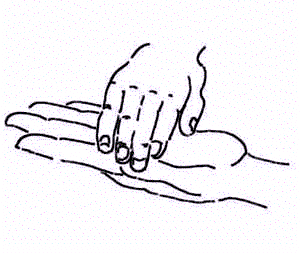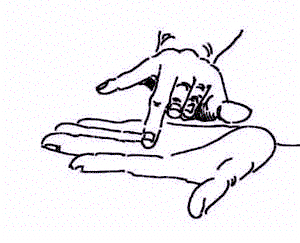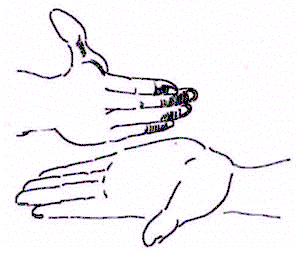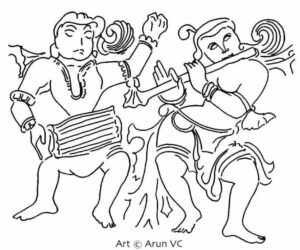
Listen to these exercises by Kalaimamani Sri TR Sundaresan before reading on for more details.
Exercises (4 talas)
First memorize these exercises in order to practice them anywhere, any time:
Ādi tāla (8 syllables) – Duration: 2:44
“ta ka dhi mi ta ka ju nu“- trikāla = 3 speeds
Misra cāpu tāla (7 syllables) – Duration: 2:52
“ta ki ta ta ka dhi mi” – trikāla = 3 speeds
Khanda cāpu tāla (5 syllables) – Duration: 2:05
“ta ka ta ki ta“- trikāla = 3 speeds
Rūpaka tāla (3 syllables) – Duration: 0:42
“ta ki ta“- trikāla = 3 speeds
Then
– add hand gestures and claps as indicated on the accompanying PDF-sheet
– count the units as indicated
Tips: for better retention, make sure to pronounce each syllable clearly; also practice silently (whenever required by circumstances)
Tips for larger groups to practice together
The following approach has proven to work particularly well with larger groups
Step 1 Practice together in a moderate tempo as follows:
– maintaining an equal tempo with hand gestures and claps (as transcribed on the PDF-sheet)
– counting the units
Step 2 Once participants have become confident, subdivide the group into three.
This allows you to assign each sub-group with one of the above tasks, accompanied by the other sub-groups before letting them take turns.
Step 3 Adapt the lessons to a creative process that suits your situation, within Carnatic music and beyond.
All of this works equally well with open-minded adult learners, however inexperienced.
Think of intercultural collaborations among performers and composers in search of a common ground, all based on actual music making rather than abstract ideas.
Visit Archive.org for more suggestions to learn how to practice, enjoy and share these and other exercises!
Think of each exercise as “karaoke”: simply pronounce all the syllables yourself as you listen, and fill in the pauses the teacher has left for you within each lesson. Repeat often to enter and enjoy the very “flow” which binds many styles together: no less than the full gamut of “classical” and “popular” music just as several dance styles, thus crossing cultural and social divides with ease – playfully so while cultivating an open mind.
These four tālas provide the rhythmic foundation for a large portion of songs heard during Carnatic concerts. As you may have noticed during live performances and on video recordings, Carnatic audiences are welcome to participate unobtrusively, by way of “keeping tāla” with their hands and fingers. This calls for a much deeper involvement than passive enjoyment, that is: some good practice to do it properly. And this is what this mini-course is all about.
So the present exercises provide you with the very key that opens the door to immersion as well as understanding, be it as learner, connoisseur, musicologist, music organizer or teacher anywhere in the world.
Such practice not just helps to better appreciate rhythmic refinement – a feature that has distinguished Carnatic music for centuries – but also appeals to young listeners from a variety of backgrounds.
During a Carnatic drum solo, such practice also reveals the arithmetic underpinnings of this music, by observing closely how an ensemble manages musical time by means of the very techniques introduced here.
This requires an even tempo (kālapramānam), comparable with tapping with one’s feet in popular music, though a bit more demanding as you first practice any tāla based on uneven numbers, here expressed by 3, 5 and 7 syllables, in different “speeds”. (In fact, discreetly marking a given tāla with one’s feet is what an instrumentalist does as to stay aligned with fellow performers, given that his or her hands are already occupied.)
To begin with, read the transcriptions found on the PDF attachment; then practice the following exercises one by one with the help of the audio lessons provided below.
More about keeping tala with hand gestures
Keeping tala e.g. for Rupaka tala (3 counts): 2 claps followed by a wave; Adi tala (8 counts): a clap for the first beat (samam), followed by 3 finger counts starting from the small finger marks the first half; and a clap followed by a wave (twice) mark the second half; Ata tala (14 counts) differs as 4 fingers are used including the forefinger (twice), rather than 3 fingers (once) in Adi tala.
Art © Arun VC
Tips
- Practice these gestures “silently” during a live recital or recording
- Apply your practice while watching a video:
– Basic hand gestures for Adi tala (8 beats) & Misra chapu tala (7 beats)
– Precision tala keeping for the following drum and konakkol solo
How to practice
Practice along, straight from this page or the PDF. This makes it easy to repeat and remember each exercise.
The syllables used here will help to keep track of the intricate embellishments added by percussionists at the end of each subdivision, be it as accompanists or during their solos (“tani”, taniyavartanam) that provide even greater freedom to display their drumming skills. This is also the opportunity for them to impress by intricate calculations, as further studies will reveal.
But for now, “let’s get back to basics” and practice that which makes such miracles possible – time and again!
Memorize a rhythm composition in Rupaka tala (1:22 min.)
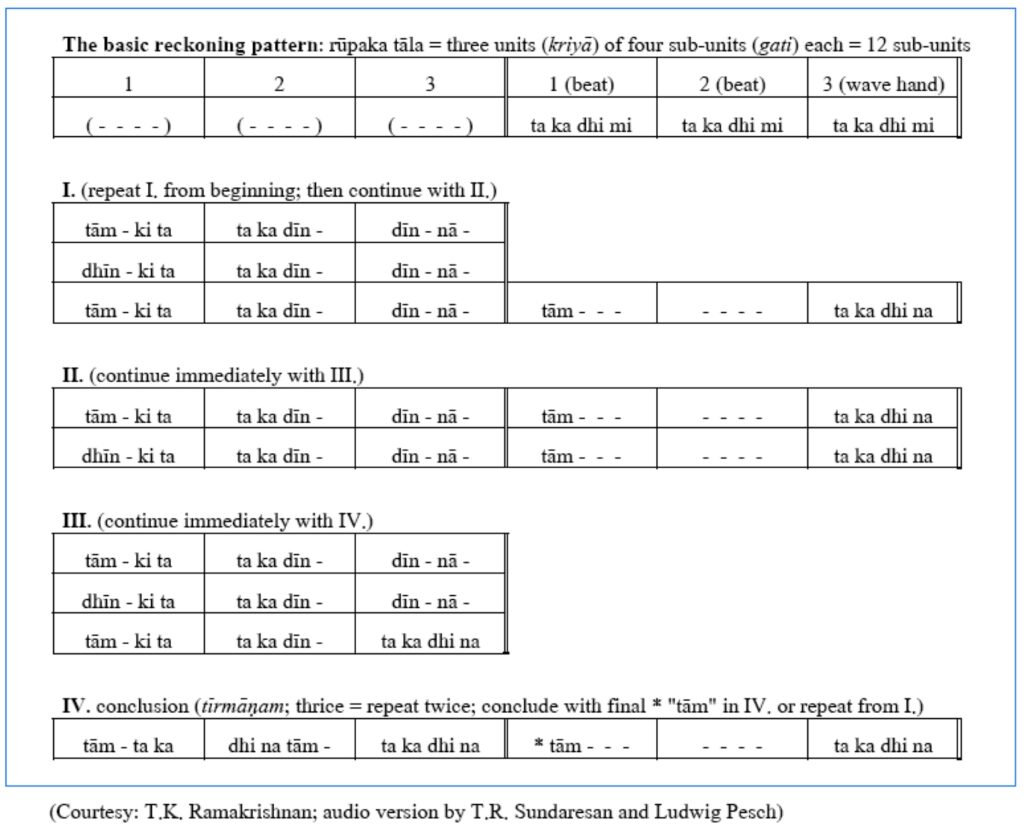
Credits © mridangam and konnakkol recitation: Kalaimamani Sri TR Sundaresan with tala support by Sheejith Krishna
To subscribe, visit the following YouTube channels
- https://www.youtube.com/c/SannidiAcademyOfMusicandArts/videos
- https://www.youtube.com/user/Rhythm43759
Up-to-date press coverage of person and topics
Periodicals and sites included | More resources | Disclaimer >>
